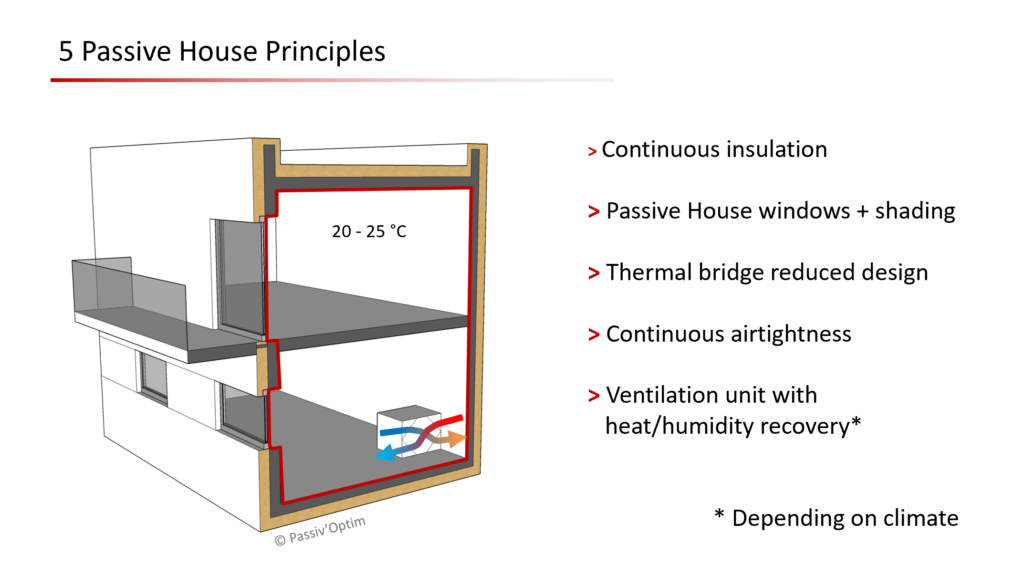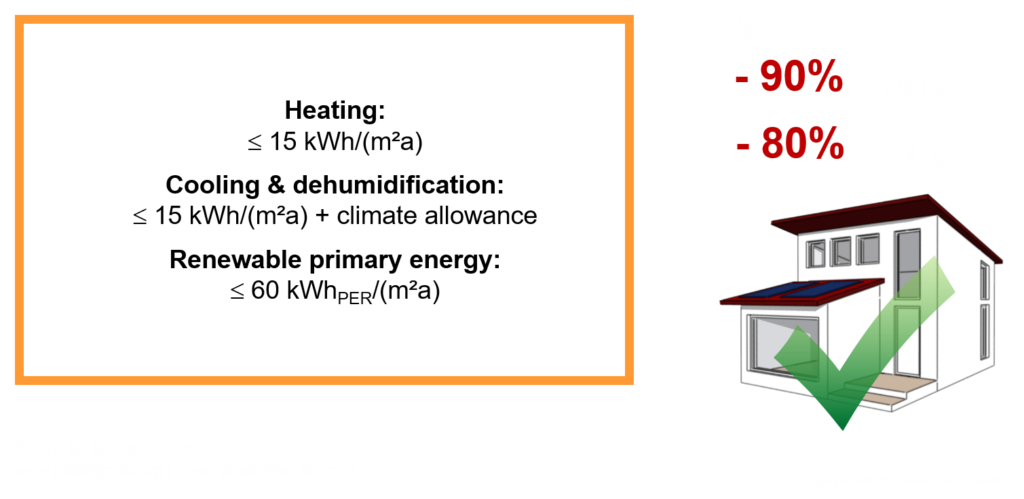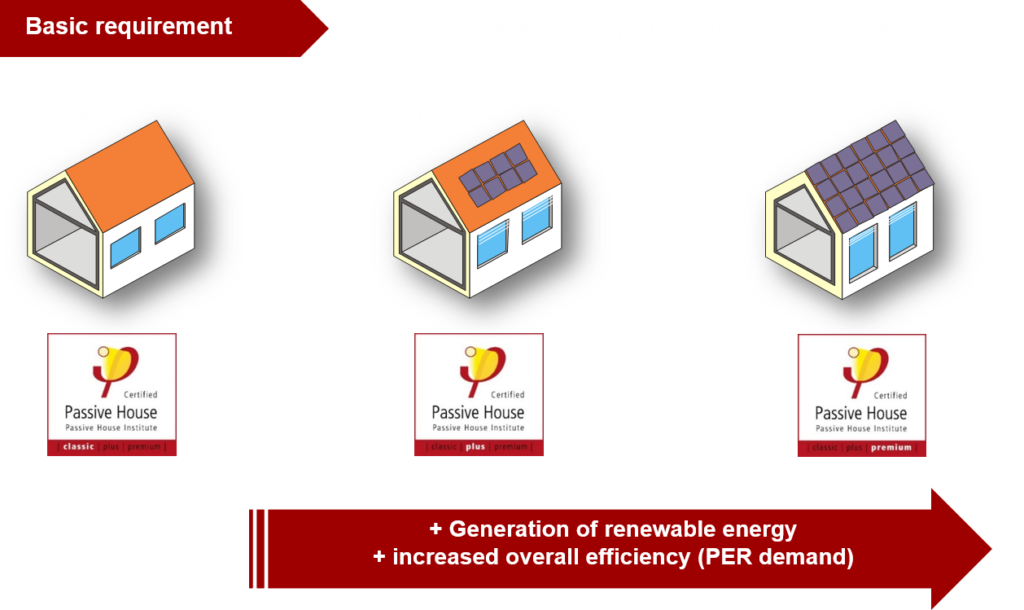The Passive House Standard
Passive House stands for comfort, health, sustainability and savings. As the name suggests, Passive House buildings make efficient use of passive cooling and heating sources.
During the warmer months, strategic, passive cooling techniques such as night ventilation and shading keep Passive House buildings comfortably cool. This substantially reduces the need for active cooling. While in colder areas, they are heated mainly from the sun and from heat by people and equipment.
The Passive House Standard is future-oriented and benefits all. Building professionals profit from a growing industry and satisfied customers, while end users benefit from greater comfort, health and quality assurance. The Standard does not prescribe a particular building design but rather sets transparent performance criteria based on building physics.

What is Passive House?
Passive House is a building standard that is truly energy efficient, comfortable and affordable at the same time. It is not a brand name, but a tried and true performance-based approach that can be applied by to any building typology, in any climate.
Yet, a Passive House is more than just a low-energy building:
• Passive Houses allow for space cooling and heating-related energy savings of up to 90% compared with typical building stock and over 75% compared to average new builds. Vast energy savings have been demonstrated in warm climates where typical buildings also require active cooling.
• Passive Houses make efficient use of passive cooling techniques such as strategic shading to keep comfortably cool during warmer months. In colder climates, Passive Houses make use of the sun, internal heat sources and heat recovery, rendering conventional heating systems unnecessary throughout even the coldest of winters.
• Passive Houses are praised for the high level of comfort they offer. Internal surface temperatures vary little from indoor air temperatures, even in the face of extreme outdoor temperatures. Special windows and a building envelope consisting of a highly insulated roof and floor slab, as well as highly insulated exterior walls, keep the undesirable heat out – or the desired warmth in the house.
• A ventilation system imperceptibly supplies constant fresh air, making for superior air quality without unpleasant draughts. A highly efficient heat recovery unit prevents most heat and humidity from entering the building via the supply air.

Efficiency and renewables: A match made in heaven
The low energy demand of a Passive House building makes it easy to achieve more with less. Renewables placed on even a small surface area suffice to cover the biggest part of your energy demand! This #EfficiencyFirst approach reduces the costs for energy infrastructure and (em)powers local communities!

The benefits of building better
The associated benefits of building better exceed environmental and cost benefits. Certified Passive House buildings:
• Achieve a high level of comfort – Passive Houses are optimally insulated for the local climate creating a consistently comfortable indoor climate, free of draughts.
• Provide fresh air – The ventilation system with heat recovery cares for comfortable indoor temperatures. In humid climates, a humidity recovery is applied.
• Are built to last – Passive House buildings are resistant to moisture build-up and mould damage. The reason: Good airtightness and high-quality components.
• Perform as planned – The planning tool (PHPP) ensures a reliable energy balance. There is no so-called “performance gap” between the planned energy need and the real energy consumption of a building.
• Can be designed as desired – The Passive House standard is a performance standard and not a specific construction method. Designers are free to choose how to meet the energy performance criteria.
• Are more cost-effective – Over the building’s lifecycle, a Passive House building is more cost-effective than a conventional build due to its extremely low energy demand and therefore low running costs.
Find out more
To learn more about the Passive House Standard visit the iPHA website and take a look at Passipedia, the wiki-based Passive House resource, featuring both basic information and in-depth research and years of accumulated knowledge on the Standard and its implementation. You can also take the free 'Passive House for Decision Makers' short e-learning course to learn the basics.
The iPHA website also contains a fully searchable member database, a useful tool in finding and getting in touch with other Passive House experts/stakeholders in your region, as it allows you to search by profession, country, special Passive House related qualification etc. The Passive House database is also a great resource to find existing examples of Passive House buildings worldwide.